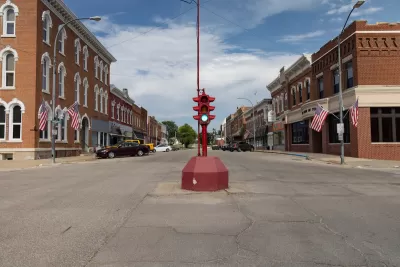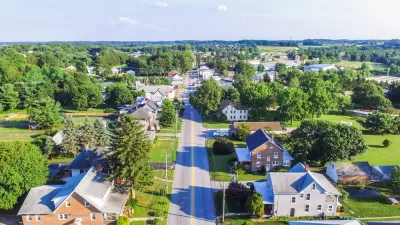Population loss doesn’t have to be a harbinger of doom. Some rural communities are taking small but impactful steps to improve quality of life for their remaining residents.

An article by Tom Barton in The Gazette highlights the efforts rural Iowa communities are making to improve life for residents and businesses despite a shrinking population and economy.
Renovating old buildings like restaurants can be expensive, but can also serve as a catalyst for revitalizing a neighborhood. “State and regional experts say it’s a prime example of how shrinking small towns can manage and stabilize population loss, by focusing on growing community pride and identifying projects that add to residents’ quality of life.” While rural towns may continue to shrink, local leaders can plan for reduced populations while maintaining local services.
This is the aim of the ‘smart shrinkage project’ started at Iowa State University, which “received a three-year, $1.5 million grant from the National Science Foundation to build upon a 2017 pilot study examining whether there were towns in Iowa that have lost population but perception of quality of life has remained stable or improved.” The research team found that social infrastructure was a key factor in how well communities fared.
“Economic development projects often require significant financial investment and may or may not pan out long-term, whereas quality-of-life initiatives — such as trails, community events, fitness options and child care — are typically low-cost and in local control,” according to Kimberly Zarecor, leader of the research project.
The communities studied all embrace a “shrink small” approach, which moves away from stigmatizing population loss and toward strengthening community infrastructure through a focus on philanthropy, community-led projects, and small but impactful projects.
FULL STORY: Rural Iowa continues to lose population. How some small towns are working to ‘shrink smart’

Planetizen Federal Action Tracker
A weekly monitor of how Trump’s orders and actions are impacting planners and planning in America.

Restaurant Patios Were a Pandemic Win — Why Were They so Hard to Keep?
Social distancing requirements and changes in travel patterns prompted cities to pilot new uses for street and sidewalk space. Then it got complicated.

Map: Where Senate Republicans Want to Sell Your Public Lands
For public land advocates, the Senate Republicans’ proposal to sell millions of acres of public land in the West is “the biggest fight of their careers.”

Maui's Vacation Rental Debate Turns Ugly
Verbal attacks, misinformation campaigns and fistfights plague a high-stakes debate to convert thousands of vacation rentals into long-term housing.

San Francisco Suspends Traffic Calming Amidst Record Deaths
Citing “a challenging fiscal landscape,” the city will cease the program on the heels of 42 traffic deaths, including 24 pedestrians.

California Homeless Arrests, Citations Spike After Ruling
An investigation reveals that anti-homeless actions increased up to 500% after Grants Pass v. Johnson — even in cities claiming no policy change.
Urban Design for Planners 1: Software Tools
This six-course series explores essential urban design concepts using open source software and equips planners with the tools they need to participate fully in the urban design process.
Planning for Universal Design
Learn the tools for implementing Universal Design in planning regulations.
Heyer Gruel & Associates PA
JM Goldson LLC
Custer County Colorado
City of Camden Redevelopment Agency
City of Astoria
Transportation Research & Education Center (TREC) at Portland State University
Camden Redevelopment Agency
City of Claremont
Municipality of Princeton (NJ)





























